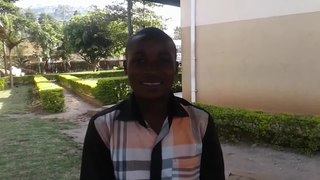Related Research Articles
The Saho language is an Afro-Asiatic language spoken in Eritrea, Sudan and Ethiopia. It belongs to the family's Cushitic branch.

Kiga is a Great Lakes Bantu language of the Kiga people (Bakiga). Kiga is a similar and partially mutually intelligible with the Nkore language. It was first written in the second half of the 19th century. Kiga is largely spoken in the ancient Kigezi region which includes about 5 districts, namely Rubanda, Rukiga, Kabale, Kanungu and some parts of Rukungiri. As of 2021, Kiga is spoken natively by about 1.3 million people in Uganda.
Kija is an Australian Aboriginal language today spoken by about 200 people, most of whom live in the region from Halls Creek to Kununurra and west to Lansdowne and Tableland Stations in Western Australia. It is a member of the Jarragan language family, a non-Pama-Nyungan family in the East Kimberleys. The Argyle Diamond Mine, on the south western corner of Lake Argyle is on the borders of Gija and Miriwoong country. The Purnululu Bungle Bungle National Park is mostly in Gija country.
Sougb, or Sogh, is a Papuan language of the East Bird's Head language family spoken in the east of the Bird's Head Peninsula to the east of Meyah and to the south of Manokwari, including the area of Soug Jaya District, Teluk Wondama Regency. It consists of four dialects and is spoken by around 12,000 people in all. The language is alternatively known as Mantion, or Manikion, an originally derogatory term used by the Biak people.
Daasanach is a Cushitic language spoken by the Daasanach in Ethiopia, South Sudan and Kenya whose homeland is along the Lower Omo River and on the shores of Lake Turkana.
Luwo, is a language spoken by the Luo people of Bahr el Ghazal region in South Sudan. The language is predominantly spoken in the western and northern parts of Bahr el Ghazal. The Luwo form a majority in the Jur River County.
Kgalagadi is a Bantu language spoken in Botswana, along the South African border. It is spoken by about 40,000 people. In the language, it is known as Shekgalagari.
The Ndjébbana language, also spelt Djeebbana and Ndjebanna and also known as Kunibidji, is a Burarran language spoken by the Gunavidji (Ndjebbana) people of North-central Arnhem Land in the Northern Territory of Australia.
Wadjiginy, also known as Wagaydy (Wogait) and Batjamalh, is an Australian Aboriginal language. Apart from being closely related to Kandjerramalh, it is not known to be related to any other language, though it has borrowed grammatical and lexical material from neighboring Northern Daly languages.
Marrithiyel, also known as Berringen, is an Australian Aboriginal language spoken by the Marrithiyal people.
The Maringarr language is a moribund Australian Aboriginal language spoken along the northwest coast of the Northern Territory.
Kemberano is a Papuan language of the Bird's Head Peninsula of West Papua, Indonesia.
Buglere, also known as Bugle, Murire and Muoy, is a Chibchan language of Panama closely related to Guaymi. There are two dialects, Sabanero and Bokotá (Bogota), spoken by the Bokota people.
Machiguenga (Matsigenka) is a major Arawakan language in the Campa sub-branch of the family. It is spoken in the Urubamba River Basin and along the Manu River in the Cusco and Madre de Dios departments of Peru by around 6,200 people. According to Ethnologue, it is experiencing pressure from Spanish and Quechua in the Urubamba region, but is active and healthy in the Manu region. It is close enough to Nomatsiguenga that the two are sometimes considered dialects of a single language; both are spoken by the Machiguenga people. Nanti is partially mutually intelligible but ethnically distinct.
Gwari is a Nupoid language spoken by the Gbagyi people, which make up over a million people in Nigeria. There are two principal varieties, Gbari and Gbagyi, which have some difficulty in communication; sociolinguistically they are distinct languages.
Yamdena is an Austronesian language of Yamdena and surrounding islands in the Maluku Islands in Indonesia. In 1991 there were an estimated 25,000 speakers of the language. Current BPS data has the present number of speakers at 69,000.
Orokaiva is a Papuan language spoken in the "tail" of Papua New Guinea.
Madhi-Madhi, also known as Muthimuthi or Madi Madi, is an Indigenous Australian language spoken by the Muthi Muthi Aboriginal people of south-west New South Wales. It is also known as Madhi Madhi, Madi Madi, Bakiin, Mataua, Matimati, Matthee matthee, Moorta Moorta, Mudhi Mudhi, Muthimuthi, Muti muti, Muttee Muttee, Madimadi, Mutte Mutte, or Madi madi.

The Western Daly languages are a small family of Australian aboriginal languages that share common grammatical forms. They are:
Manyjilyjarra is generally considered a dialect of the Western Desert language.
References
- ↑ Maranunggu at Ethnologue (19th ed., 2016)

Ami (Emmi) at Ethnologue (19th ed., 2016)
Manda (Menthe) at Ethnologue (19th ed., 2016)
- ↑ N215 Marranj at the Australian Indigenous Languages Database, Australian Institute of Aboriginal and Torres Strait Islander Studies
- Tryon, Darrell T. An introduction of Maranungku (Northern Australia). B-15, x + 121 pages. Pacific Linguistics, The Australian National University, 1970. doi : 10.15144/PL-B15